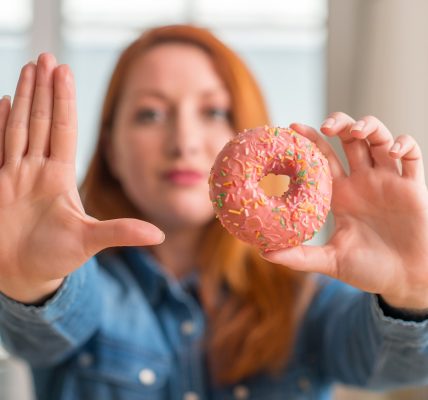Addiction and the Difference Between Liking and Wanting

One of the hypotheses for understanding obesity is that people overeat because it gives them pleasure and they are gluttons for pleasure. For many decades, it was believed that overweight people often lacked willpower and therefore exhibited a moral failing in not being able to resist temptation. Fortunately, we have science to thank for putting this hypothesis to the test and debunking it.
In an article for the research journal, Appetite, David J. Mela, from the Unilever Food & Health Research Institute in the Netherlands, says that obese people do not overeat because they like the food; they overeat because they want the food. Mela defines liking food as “pleasure derived from oro-sensory stimulation of food” and defines wanting food as “incentive salience, the motivation to engage in eating.”
Mela says the evidence suggests obesity is not typically a result of malfunctioning in the normal regulatory system that governs how much we eat. Rather, that system is “apparently overridden by other sources of positive stimulation to eat.” Mela writes:
There is a growing consensus that observed variation (across time, place and people) in energy intake relative to obesity largely reflects variation in the influence of (and susceptibility to) factors which stimulate “non-homoeostatic” eating, and their interactions with or overriding of internal homoeostatic systems (Berthoud, 2004; Blundell & Finlayson, 2004; Yeomans, Blundell, & Leshem, 2004).
Mela cites studies that show obese people do not have an abnormal sense of “food liking.” They respond to the same flavors, aromas and textures in the same way as non-obese people. In looking to get past the idea of hedonistic overeating, Mela is stymied by the lack of studies into “non-hedonic reward aspects of food and eating.” He stresses there should be a “renewed emphasis on understanding the nature of externally cued eating behaviour.”
In a fascinating paper on the cue-driven process of addiction, two authors from the Stanford University Department of Economics argue that “experience sensitizes an individual to environmental cues that trigger mistaken usage.” The authors elaborate:
[U]pon exposure to environmental cues, the individual may enter a “hot” decision making mode in which he always chooses to consume the substance irrespective of underlying preference.
Among the research cited by the authors in support of a cue-sensitivity approach to addiction treatment:
- Long-term usage is considerably lower among those who experience significant changes in the environment.
- Sufferers engage in voluntary removal or “degrading future options” by going to rehab, for example, or asking friends to restrain them.
- A willingness to endure the unpleasant side effects of withdrawal and medication in order to stop using.
The authors also point to the success of cognitive and behavioral therapy in reducing the rate of relapse as evidence that cue-based over-consumption may be behind addiction. Behavioral therapy is all about cue avoidance, say the authors, and cognitive therapy is all about cue management, such as refocusing and episodic future thinking.
In this lengthy paper, the authors build the case that it is not the “likability” of the object of addiction that causes addiction; rather, it is the “grossly exaggerated pleasure forecast” which is triggered by the cue that leads to poor decision-making. In the policy suggestions portion of the paper, the authors suggest paying people to make better decisions, one of the earliest references I’ve seen to contingency management in the treatment of addiction.
In 2015, a study of 152 adults near Houston, Texas, divided into two groups of 64 lean persons and 88 obese persons, concluded that “obese individuals, in general, do not demonstrate aberrant brain reward responses to food-related cues.” They strapped them to an electroencephalograph (EEG) and showed them pictures of food. They found that obese people were more responsive to cues than to sensations and also self-reported “significantly higher levels of emotional eating and food craving.” For obese persons, the cues themselves were “highly arousing pleasant stimuli.” The researchers summarize:
Collectively, our results challenge the general belief that obesity is characterized by the abnormally high attribution of incentive salience to highly palatable food cues, highlighting the importance of considering alternative study paradigms that incorporate other emotionally relevant stimuli rather than neutral stimuli as a ‘control’ condition and demonstrating the need to consider important neurobehavioral endophenotypes of obesity.
Wow, that is some sentence! It is at once saying something profound while also being opaque and nearly impossible to parse. What I’m seeing is that addiction looks more and more brain-driven and less and less substance-driven the closer you look at it. We’ll keep looking here at AddictionNews.
Written by Steve O’Keefe. First published April 23, 2024.
Sources:
“Eating for pleasure or just wanting to eat? Reconsidering sensory hedonic responses as a driver of obesity, “Appetite, July 2006.
“Addiction and Cue-Triggered Decision Processes,” American Economic Review, July 2004.
“Heterogeneity in brain reactivity to pleasant and food cues: evidence of sign-tracking in humans,” Social Cognitive and Affective Neuroscience, November 2015.
Image Copyright: sonjachnyj.




